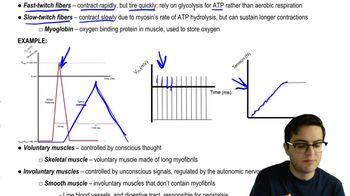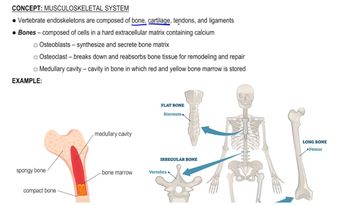Table of contents
- 1. Introduction to Biology2h 42m
- 2. Chemistry3h 40m
- 3. Water1h 26m
- 4. Biomolecules2h 23m
- 5. Cell Components2h 26m
- 6. The Membrane2h 31m
- 7. Energy and Metabolism2h 0m
- 8. Respiration2h 40m
- 9. Photosynthesis2h 49m
- 10. Cell Signaling59m
- 11. Cell Division2h 47m
- 12. Meiosis2h 0m
- 13. Mendelian Genetics4h 44m
- Introduction to Mendel's Experiments7m
- Genotype vs. Phenotype17m
- Punnett Squares13m
- Mendel's Experiments26m
- Mendel's Laws18m
- Monohybrid Crosses19m
- Test Crosses14m
- Dihybrid Crosses20m
- Punnett Square Probability26m
- Incomplete Dominance vs. Codominance20m
- Epistasis7m
- Non-Mendelian Genetics12m
- Pedigrees6m
- Autosomal Inheritance21m
- Sex-Linked Inheritance43m
- X-Inactivation9m
- 14. DNA Synthesis2h 27m
- 15. Gene Expression3h 20m
- 16. Regulation of Expression3h 31m
- Introduction to Regulation of Gene Expression13m
- Prokaryotic Gene Regulation via Operons27m
- The Lac Operon21m
- Glucose's Impact on Lac Operon25m
- The Trp Operon20m
- Review of the Lac Operon & Trp Operon11m
- Introduction to Eukaryotic Gene Regulation9m
- Eukaryotic Chromatin Modifications16m
- Eukaryotic Transcriptional Control22m
- Eukaryotic Post-Transcriptional Regulation28m
- Eukaryotic Post-Translational Regulation13m
- 17. Viruses37m
- 18. Biotechnology2h 58m
- 19. Genomics17m
- 20. Development1h 5m
- 21. Evolution3h 1m
- 22. Evolution of Populations3h 52m
- 23. Speciation1h 37m
- 24. History of Life on Earth2h 6m
- 25. Phylogeny2h 31m
- 26. Prokaryotes4h 59m
- 27. Protists1h 12m
- 28. Plants1h 22m
- 29. Fungi36m
- 30. Overview of Animals34m
- 31. Invertebrates1h 2m
- 32. Vertebrates50m
- 33. Plant Anatomy1h 3m
- 34. Vascular Plant Transport1h 2m
- 35. Soil37m
- 36. Plant Reproduction47m
- 37. Plant Sensation and Response1h 9m
- 38. Animal Form and Function1h 19m
- 39. Digestive System1h 10m
- 40. Circulatory System1h 57m
- 41. Immune System1h 12m
- 42. Osmoregulation and Excretion50m
- 43. Endocrine System1h 4m
- 44. Animal Reproduction1h 2m
- 45. Nervous System1h 55m
- 46. Sensory Systems46m
- 47. Muscle Systems23m
- 48. Ecology3h 11m
- Introduction to Ecology20m
- Biogeography14m
- Earth's Climate Patterns50m
- Introduction to Terrestrial Biomes10m
- Terrestrial Biomes: Near Equator13m
- Terrestrial Biomes: Temperate Regions10m
- Terrestrial Biomes: Northern Regions15m
- Introduction to Aquatic Biomes27m
- Freshwater Aquatic Biomes14m
- Marine Aquatic Biomes13m
- 49. Animal Behavior28m
- 50. Population Ecology3h 41m
- Introduction to Population Ecology28m
- Population Sampling Methods23m
- Life History12m
- Population Demography17m
- Factors Limiting Population Growth14m
- Introduction to Population Growth Models22m
- Linear Population Growth6m
- Exponential Population Growth29m
- Logistic Population Growth32m
- r/K Selection10m
- The Human Population22m
- 51. Community Ecology2h 46m
- Introduction to Community Ecology2m
- Introduction to Community Interactions9m
- Community Interactions: Competition (-/-)38m
- Community Interactions: Exploitation (+/-)23m
- Community Interactions: Mutualism (+/+) & Commensalism (+/0)9m
- Community Structure35m
- Community Dynamics26m
- Geographic Impact on Communities21m
- 52. Ecosystems2h 36m
- 53. Conservation Biology24m
47. Muscle Systems
Musculoskeletal System
Problem 2`
Textbook Question
In muscle cells, myosin molecules continue moving along actin molecules as long as:
a. ATP is present and troponin is not bound to Ca²⁺.
b. ADP is present and tropomyosin is released from intracellular stores.
c. ADP is present and the intracellular acetylcholine level is high.
d. ATP is present and the intracellular Ca²⁺ concentration is high.
 Verified step by step guidance
Verified step by step guidance1
Understand the role of ATP in muscle contraction: ATP is crucial for the detachment of myosin heads from actin filaments, allowing the cycle of muscle contraction to continue.
Recognize the importance of calcium ions (Ca2+) in muscle contraction: High intracellular Ca2+ concentration leads to the binding of Ca2+ to troponin, which causes a conformational change that moves tropomyosin away from the binding sites on actin, allowing myosin to bind to actin.
Identify the role of troponin and tropomyosin: Troponin binds to Ca2+, which then causes tropomyosin to shift and expose the binding sites on actin for myosin attachment.
Consider the conditions required for continuous movement of myosin along actin: ATP must be present to provide energy for the myosin head to detach and reattach, and Ca2+ must be present to ensure that the binding sites on actin are exposed.
Evaluate the options given in the problem: The correct condition for myosin to continue moving along actin is when ATP is present and the intracellular Ca2+ concentration is high, as this allows the cycle of muscle contraction to proceed.
 Verified video answer for a similar problem:
Verified video answer for a similar problem:This video solution was recommended by our tutors as helpful for the problem above
Video duration:
2mPlay a video:
Was this helpful?
Key Concepts
Here are the essential concepts you must grasp in order to answer the question correctly.
ATP and Muscle Contraction
ATP is crucial for muscle contraction as it provides the energy needed for myosin heads to detach from actin filaments and re-cock for another cycle of movement. Without ATP, myosin remains bound to actin, preventing further contraction cycles. Thus, ATP presence is essential for continuous muscle contraction.
Recommended video:
Role of Calcium Ions (Ca2+) in Muscle Contraction
Calcium ions play a pivotal role in muscle contraction by binding to troponin, which causes a conformational change that moves tropomyosin away from actin's binding sites. This exposure allows myosin to bind to actin, facilitating contraction. High intracellular Ca2+ concentration is necessary for sustained muscle contraction.
Recommended video:
Guided course

Motor Unit and Neuromuscular Junction
Troponin and Tropomyosin Regulation
Troponin and tropomyosin are regulatory proteins that control muscle contraction. Troponin binds to Ca2+, leading to tropomyosin's repositioning, which exposes actin's binding sites for myosin. This regulation ensures that muscle contraction occurs only when Ca2+ is present, preventing unwanted contractions.
Recommended video:
Guided course

Cell Cycle Regulation

 2:08m
2:08mWatch next
Master Muscle System and Skeleton with a bite sized video explanation from Jason
Start learningRelated Videos
Related Practice





















































